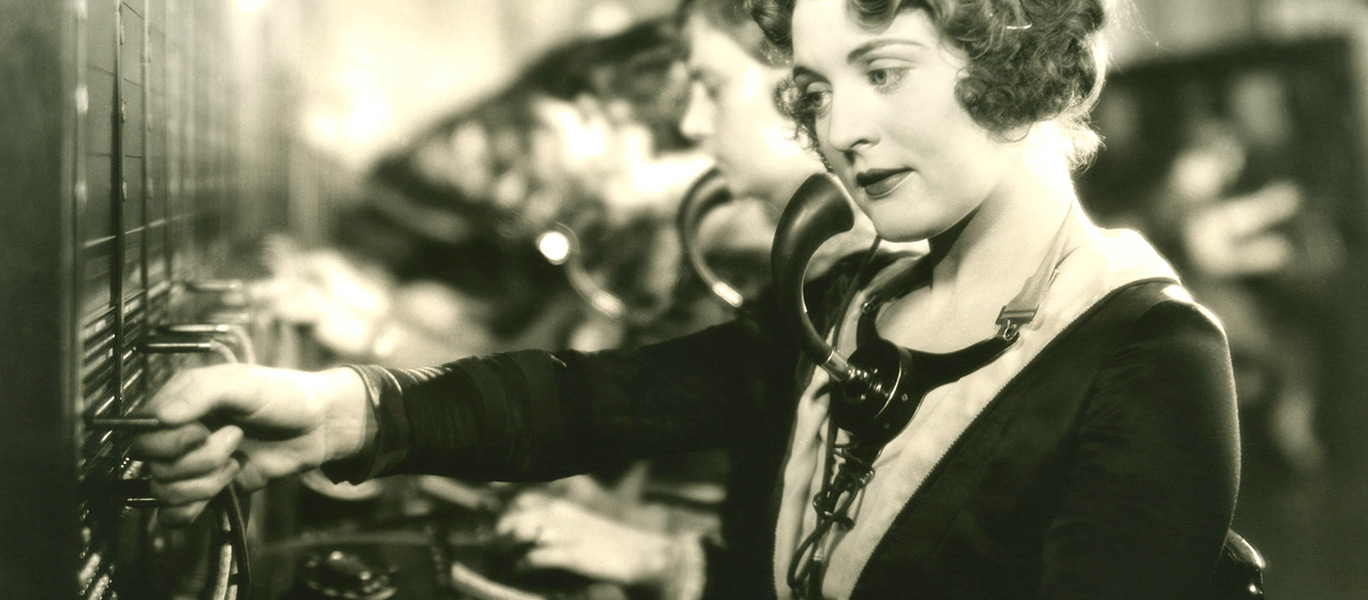It’s one of the oldest methods for providing customer service. The call center has a storied history that starts in the 1950’s even though the term “call center” wasn’t in use until 1983. Initially, these types of services were used to sell things to consumers in much the same manner as telemarketers might call your home or traveling salesman used to knock on your door trying to sell you a vacuum cleaner.
But over the past 60 years the call center has not only taken many forms but it has also been a valuable partner in the innovative development of technologies that we still use today. These modernizations helped to revolutionize the call center from one decade to the next, all the way up to today’s highly advanced call centers and answering services that provide critical customer service for businesses, medical providers, and yes, even telemarketers who are trying to sell you something.
So let’s take a brief stroll down memory lane as we explore the evolution of the modern day call center.
The Beginning
Back in 1957, the very first call center was formed by the Life Circulation Company (which is the precursor to the telemarketing firm DialAmerica, currently in operation today). LCC conceived a system that was initially designed to serve as a form of advertising for local sports teams and not-for-profit organizations. But it didn’t really gain ground as a viable method for sales until Time Inc., the company that published LIFE magazine was using the call center as a way to boost magazine subscription sales. From there, an idea was born.
Receptionists or operators were seated at large switchboards that were known as Private Manual Branch Exchanges (PMBXs). These individuals would connect a call manually to a person or extension by plugging and unplugging a cable in order to initiate and end a call. But as the years went on and technologies grew more advanced, the days of manually connecting a call would be replaced by automated methods.
The Rise of Automation
By the 1960’s, manual switchboards were being phased out and replaced by Private Automated Business Exchanges (PABXs), which had the capacity for handling an increased number of calls by way of computer operated technologies known as Automatic Call Distributors (ACDs). Now that the machinery no longer required manual connection and disconnection by a human operator, the concept of the call center as we know it today started to emerge.
Calls would come in to a hub where a computerized algorithm connects an incoming call to the next available representative. With greater call capacity becoming feasible the call center really took off, paving the way for call centers to be established anywhere that customer service was an important component of doing business on a regular basis.
Innovation and Invention
As switchboards grew more sophisticated and human operators were no longer required to place a call, individual technologies blossomed and made it possible for call centers to operate faster and more efficiently. Two such advancements in particular, touch-tone dialing and the 1-800 number, are cornerstones of today’s modern world and they each played a substantial role in the further progress of the call center as we know it now.
Touch-tone Dialing
When the mid-1960’s came around, the days of the rotary dial were numbered. By the old standard, anytime you dialed a number it was represented as a succession of pulses that were emitted as the dial turned to each number you wanted to dial in order to place your call. But in 1963 a new system was implemented in which dual-tone multi-frequency laid the foundations for the touch-tone dial that gained widespread popularity by the 1980’s. Since this new system didn’t require you to speak in order to communicate along a phone line, this updated method became a vital component of call centers.
1-800 Numbers
The 1-800 number was created by an engineer at AT&T back in the late 1960’s as a method by which to route collect calls much quicker and routinely. But, like with any new innovation, someone found a way to utilize it as a sales tool and 1-800 numbers became more synonymous with marketing than making collect calls. By the 1980’s the trend caught on as companies both large and small from every industry in the marketplace were using 1-800 numbers for marketing purposes and customer service applications.
The Modern Call Center
Nowadays, computers have been more widely incorporated into the routine operation of today’s call centers. More technological advancements in Interactive Voice Response systems, Voiceover Internet Protocol, and Integrated Services Digital Network (ISDN) lines allowed for caller ID, conferencing, and call forwarding to become the norm with phone systems. All of these advancements would allow for answering services to be on call 24 hours a day, 7 days a week and provide a thoroughly positive customer service experience that is an essential element for a full array of businesses around the world.
These new services also bring speed and accuracy to the equation as well, offering telephone agents the ability to answer calls quicker and serve the needs of the customer much faster.


